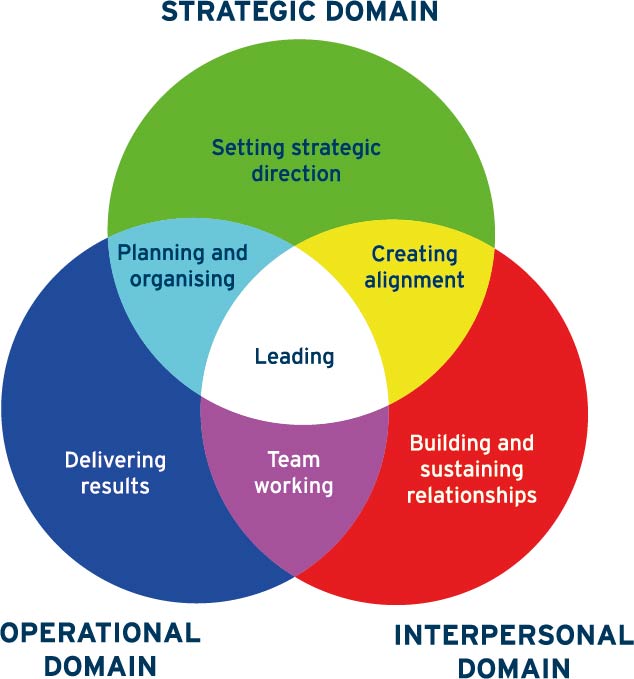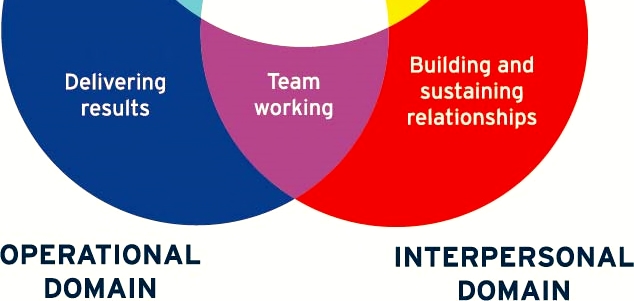Business is business – Six pitfalls of family business leadership
June 28, 2017
First and foremost, family businesses are businesses. Like all organisations they require good leadership. In this article, I’d like to highlight some of the common pitfalls of family business leadership. But first, let’s recap what leadership involves. In a previous article, I talked about what leaders do based on a leadership model called the Primary Colours® Model. The model identifies the tasks of leadership, which fall into three domains – strategic, interpersonal and operational. Leaders need to work out where they are going, get all the relevant people aligned around that strategy and create some plans and processes to make it happen.  They need to build and sustain key relationships and create strong teams in order to deliver results. And at some point, they have to stand back and work out where the organisation’s focus should be and maybe even let someone else take a lead. It’s implicit in the model that no one is going to be good at all of it, so sometimes it pays to let someone else take the reins.
They need to build and sustain key relationships and create strong teams in order to deliver results. And at some point, they have to stand back and work out where the organisation’s focus should be and maybe even let someone else take a lead. It’s implicit in the model that no one is going to be good at all of it, so sometimes it pays to let someone else take the reins.
So working from this model, I’ve identified six pitfalls of family business leadership.
1. Bottom-up leadership
Family businesses are often founded and run by people who really know what they’re doing and do it very well. They often value tradition and take account of what has gone before.  This makes them strong in the Operational domain of leadership. It also stands to reason that people who work with their relatives, tend to place a high value on relationships. But this can result in leadership from the bottom half of the model only. If no one is working in the strategic domain, there’s a risk you could end up with, for example, the friendliest, most efficient chain of DVD rental shops in the region. Right up to the point where you get wiped out by Netflix.
This makes them strong in the Operational domain of leadership. It also stands to reason that people who work with their relatives, tend to place a high value on relationships. But this can result in leadership from the bottom half of the model only. If no one is working in the strategic domain, there’s a risk you could end up with, for example, the friendliest, most efficient chain of DVD rental shops in the region. Right up to the point where you get wiped out by Netflix.
Actually bottom-up leadership is just the most common example of the second pitfall….
2. Lopsided leadership
Remember that no one is likely to be good at all of the tasks of leadership. If you’re all quite similar – and having the same genes and being brought up in the same household can make that quite likely – you’re all likely to be good at the same bits. Suppose your family are a self-disciplined, well-organised bunch, all colour-coded sock drawers and CDs in alphabetical order. It’s likely that you’ll all be good at Planning and Organising. So good, that you may over-emphasise planning, maybe creating a civil service-style bureaucracy to run a medium-sized enterprise. By contrast, if, in some unthinkable parallel universe, my brother and I were to run a business, we would inevitably create an organisation that prided itself on flying by the seat of its pants. We would probably start to see leadership as heroically averting a crisis at the very last minute – a crisis that would never have arisen had we been more organised.
To avoid pitfalls 1 & 2 you need to recognise that those leadership tasks that you don’t like, or are not very good at, are still vital. If you’re not going to do them, then find someone who will. You may need to get someone with a different skill set on to your leadership team or perhaps use a non-exec director or a consultant to plug the gap.
3. All aboard leadership teams
In a non-family business, people tend to expand their leadership teams as the need arises – “We’re at a stage where we could do with a Marketing Director” type thing. This isn’t always the case in a family business. Imagine a family business owner with four children. Let’s say that the people he set the business up with are now retiring – FD, Ops Director and Sales & Marketing Director. Three of his children have been shadowing these directors, gaining the skills, knowledge and qualifications necessary to take over. But that leaves that pesky fourth child. What do you do with him? He wants his seat at the table, it’s only fair. Maybe he’s good with computers, so let’s make him IT Director, everyone’s happy, right?
The problem is that you probably don’t need an IT Director. If you hadn’t had that fourth child you might make do with an IT Manager or even outsource it. Your senior leadership team should be spending its time discussing the most important issues facing the business but you’ll have IT as an agenda item every month with the same priority as sales and finance. You might even invest more in IT and develop state of the art systems that you don’t really need.
4. “Don’t worry, you’ll pick it up” directorships
Curiously, no one ever appoints an unqualified Finance Director. The money’s too important for that.  But all the others are up for grabs: “You’re good with people – why don’t you become HR Director?”; “You did an amazing job on that brochure, let’s make you Marketing Director. How hard can it be?” Well actually, quite hard. People work for years to get the skills, experience and qualifications necessary to take on those roles. There’s nothing wrong with developing family members to take on these roles but think of it this way – if you advertised the job and their CV came in, how seriously would you take it? How big is the gap and how will you bridge it?
But all the others are up for grabs: “You’re good with people – why don’t you become HR Director?”; “You did an amazing job on that brochure, let’s make you Marketing Director. How hard can it be?” Well actually, quite hard. People work for years to get the skills, experience and qualifications necessary to take on those roles. There’s nothing wrong with developing family members to take on these roles but think of it this way – if you advertised the job and their CV came in, how seriously would you take it? How big is the gap and how will you bridge it?
Pitfalls 3 & 4 are both about tailoring the business to fit the family. There are likely to be some compromises when assigning roles within a family business. It will depend to some extent on the size of the business: four of you working round the kitchen table is rather different from a mature family business employing several hundred people. But if you twist the business too far to accommodate the family, you are storing up problems for the future.
5. Vaguely agreeing
Lots of leadership teams avoid conflict; most of us don’t like it much. But in family firms the consequences of falling out are much greater, so there’s more incentive to stay out of the difficult stuff. One way to do that is to keep things vague. “We want to grow the business” is a statement you’re unlikely to fall out over. The clearer you get about what that actually means and what your options are, the more scope there is to disagree. Vagueness can also be a consequences of bottom-up leadership – if you haven’t looked at strategy, you’re not going to be clear about where you’re going. But you can end up pulling in different directions – one of you developing new products or services, another exploring opportunities in a different region – because of a lack of clarity. Sometimes this muddle is resolved by someone (often Dad) declaring that “We all want the same thing”, which is code for “This is what I want and I haven’t heard anyone disagree with me”.
Avoid this pitfall by being clearer about your options and having those difficult conversations where you have to rule some things in or out.
6. The Super Leader
The Super Leader believes he (sorry, it’s usually a he) has to lead everything. Anyone involved with family businesses knows the stereotype of the founder who won’t let go, who stifles the development of the next generation and makes succession planning difficult. But there’s a different pitfall with Super Leaders which rarely gets attention. One of the characteristics of good leadership is knowing when to let someone else take charge, not because it’s good for their development, but because they’re better at that bit of leadership than you are. You could be 47 and planning to keep leading the business for the next 20 years, but if your 25 year old daughter is better at strategic planning than you, then let her take the lead on that. The business will be better for it.
Anyone involved with family businesses knows the stereotype of the founder who won’t let go, who stifles the development of the next generation and makes succession planning difficult. But there’s a different pitfall with Super Leaders which rarely gets attention. One of the characteristics of good leadership is knowing when to let someone else take charge, not because it’s good for their development, but because they’re better at that bit of leadership than you are. You could be 47 and planning to keep leading the business for the next 20 years, but if your 25 year old daughter is better at strategic planning than you, then let her take the lead on that. The business will be better for it.
Leadership is always a challenge and is inevitably more complicated when you add in family dynamics. If you’d like to talk about leadership in your family business or the family businesses you advise, do get in touch: caroline@carolinegourlay.co.uk.
Photo credits
The Primary Colours® Model is the intellectual property of Edgecumbe Consulting





